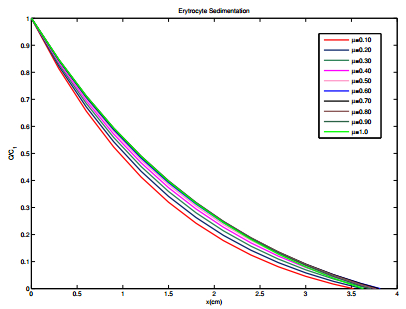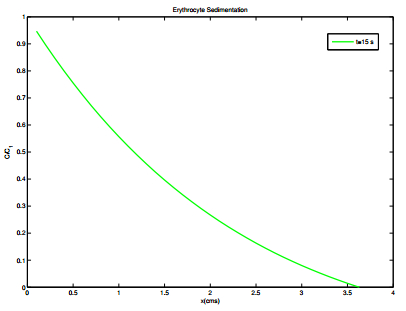1.
Introduction
Structural stability of systems is important since structural stable systems can resist external disturbance; we refer the reader to [10,11,12,13,14,15,16,17,18,19,20,21,22]. Many researchers provided sufficient conditions for structural stability of planar (2-dimension) polynomial vector fields under polynomial perturbations [30,31,32,33,34,35,36]. In this paper, we focus on the high-dimensional systems. Usually authors study structural stability under the assumption that the linear system has some hyperbolic property and in most papers the authors assume that the linear system admits (classical or uniform) exponential dichotomy [7,8]. However, it is argued that (uniform) exponential dichotomy restrict the behavior of dynamical systems. For this reason, we need a more general concept of hyperbolicity. Recently, nonuniform exponential behavior and nonuniform exponential dichotomy was introduced (see e.g. [1,3,4,5,6,20,21]). As a result a natural question arises: if the linear system admits a nonuniform exponential dichotomy, can structural stability of systems be destroyed by the nonuniformity? This paper gives a nonuniform version of structural stability of nonlinear systems.
2.
Main results
In this section, we state our main theorem. Consider the systems
where t∈R,x∈Rn, A(t) is a continuous matrix function, and f:R×Rn→Rn is a piecewise continuous function. Let T(t,s) be the evolution operator satisfying x(t)=T(t,s)x(s), t,s∈R, where x(t) is a solution of the system (2.1).
Definition 2.1. The linear system (2.1) is said to admit a nonuniform exponential dichotomy if there exists a projection P(t) (P2=P) and constants α>0,K>0,ε≥0, such that
where P(t)+Q(t)=Id(identity),T(t,s)P(s)=P(t)T(t,s),t,s∈R, and ‖⋅‖ is the Euclidean norm (see e.g. [1,2,27]).
Remark 2.1. The nonuniform exponential dichotomy reduces to the classical (uniform) exponential dichotomy by taking ε=0 in (2.3). In bad situations, an example is given in [1,2] to show that linear system does not admit an exponential dichotomy, but it admits a nonuniform exponential dichotomy.
Let f:R×Rn→Rn be a piecewise continuous function. There exists Lf>0 such that for any x1,x2∈Rn,t∈R, the piecewise continuous function f(t,x) satisfies (here ε≥0 as above)
(H1) ‖f(t,x1)−f(t,x2)‖≤Lfe−ε|t|⋅‖x1−x2‖.
For a small enough number 0<γ<1, denote
Since the conditions in S are used in the following proof, for sake of convenience, we denote
(H2) 2KLfα−1≤γ,
(H3) supt∈R∫t+1t‖f(σ,0)‖eε|σ|dσ<+∞.
For any f(t,x)∈S, define Lf=inf{c>0|‖f(t,x1)−f(t,x2)‖≤ce−ε|t|‖x1−x2‖}. Taking ‖f(t,x)‖1=max{Lf|f∈S}, then S is a normed linear vector space with norm ‖⋅‖1. If ˙x(t)=A(t)x+f(t,x) is topologically conjugated to ˙y(t)=A(t)y+g(t,y), we denote it by f≈g. For detailed definition of a topological conjugacy, for example, one can refer to [11,13,23,26,27,28,29].
Definition 2.2. The differential equation ˙x(t)=A(t)x+f(t,x) is said to be structurally stable in S, if for any g(t,y)∈S, we have ˙y(t)=A(t)y+g(t,y) is topologically conjugated to ˙x(t)=A(t)x+f(t,x) (i.e. g≈f).
Theorem 2.1. For any f(t,x)∈S, if the linear system (2.1) admits a nonuniform exponential dichotomy, then system (2.2) is structurally stable in S.
3.
Proofs of main results
To prove the main result, some preliminary lemmas are needed.
Lemma 3.1([26]) Let φ(t) be a non-negative locally integrable function on R. If there exist constants p>0,C>0 such that
then for any β>0, we have
Lemma 3.2 Suppose that system (2.1) admits a nonuniform exponential dichotomy with the constants ε,α. If the nonlinear term f(t,x)∈S, then the nonlinear system (2.2) has a unique bounded solution y(t) satisfying
Proof. Now we prove this lemma in three steps.
Step 1. First, we prove that the nonlinear system (2.2) has a unique bounded solution. For this purpose, let supt∈R∫t+1t‖f(σ,0)‖eε|σ|dσ=M, x0(t)≡0, and
Take t∈R. From (H1) and Lemma 3.1, it is easy to obtain that
which implies x1(t) is bounded. Assume that xm(t) is bounded. Define xm+1(t) as
From (2.3) and (H2), we have
It follows from (H1) and Lemma 3.1 that
and this implies
Consequently, we have
In view of (H3), 2KLfα<1, we obtain
which implies that the sequence of function {xm(t)} is bounded on R. Also,
Let Tm=supt∈R‖xm(t)−xm−1(t)‖. It follows from (H3) that
Since 0<γ<1, the series +∞∑m=1‖xm(t)−xm−1(t)‖ converges uniformly on R. Denote limm→∞xm(t)=y(t), and note y(t) is bounded. In addition,
Step 2. We will prove that any bounded solution of system (2.2) can be expressed by formula (3.1). Now assume that system (2.2) has another bounded solution x(t) satisfying x(0)=x0,‖x(t)‖≤ϑ. We have
From Lemma 3.1, we have
Hence, we see that
is bounded. In addition, the above formula is the solution of system (2.1), so it is a bounded solution. Note that the linear system has no non-trival bounded solution due to the nonuniform exponential dichotomy. Thus we have
and therefore,
Step 3. We prove the uniqueness of the bounded solution. From (2.3), (H2) and (H3), we have
That is, supt∈R‖y(t)−x(t)‖≤γsupt∈R‖y(t)−x(t)‖, which implies y(t)=x(t). Thus, the uniqueness is proved.
Remark 3.1 In the proof, the function sequence {xm(t)} can be seen as the approximation sequence of the solution of system (2.2) and we conclude that {xm(t)} is bounded on R.
Lemma 3.3 Suppose that the system (2.1) admits a nonuniform exponential dichotomy, fi(t,x)∈S,(i=1,2) and 2KLfiα−1≤γ. Let y(t,ϱ,x) be the bounded solution of
with φ(ϱ,ϱ,x)=x. Then for any x∈Rn,ϱ∈R, the following differential equation
has a unique bounded solution z(ϱ,x)(t) satisfying
Moreover, z(ϱ,x)(ϱ) uniformly converges to z(ϱ,x0)(ϱ) for x→x0∈Rn.
Proof. For fixed (ϱ,x)∈R×Rn, clearly, system (3.4) satisfies the conditions of Lemma 3.2. Thus, (3.4) has a unique bounded solution z(ϱ,x)(t) satisfying (3.5). Now we construct a sequence {z(ϱ,x)m(t)}. Let z(ϱ,x)0(t)≡0, and
Assume that z(ϱ,x)m(t) is well defined. Take
From Remark 3.1 and Lemma 3.2, the approximation sequence {z(ϱ,x)m(t)} of the solution of system (3.4) uniformly converges to z(ϱ,x)(t) on R×(R×Rn).
Now we claim that for any non-negative integer m, x0∈Rn,h>0, z(ϱ,x)m(t) uniformly converges to z(ϱ,x0)m(t) on |t−ϱ|≤h, for x→x0.
For m=0, z(ϱ,x)0(t)=0, the claim is clear. Assume that the above claim holds for m=k. Now we consider m=k+1. For x0∈Rn,h>0, we prove that for any ε>0, there exists a constant δ∗ such that
where ‖x−x0‖<δ∗.
Since fi(t,x)∈S,i=1,2, let supt∈R∫t+1t‖fi(σ,0)‖eε|σ|dσ=Mi,i=1,2.
From (2.3) and (H1), we have
where τ=1α|lnεα8[(Lf1+Lf2)¯M+2M]|. From Remark 3.1 and Lemma 3.2, we see that the approximation sequence {z(ϱ,x)m(t)} of the solution of system (3.4) is bounded on R. Also, y(s,ϱ,x) is bounded on R. Without loss of generality, we assume that they are all bounded above by ¯M. Since fi(t,x)∈S,(i=1,2), a standard computations lead us to
By assumption, for the above ε>0, there exists a constant δk>0 such that when ‖x−x0‖<δk, ‖z(ϱ,x)k(t)−z(ϱ,x0)k(t)‖<ε,|t−ϱ|≤h. Since φ(t,ϱ,x) is the solution of (2.2),
Due to the continuity, we can assume that there is a positive constant θ such that ‖A(t)‖≤θ, for |t−ϱ|≤h+τ. We have
It follows from Bellmen's inequality that
That is, for the above ε>0, there exists a constant δ0 such that
where ‖x−x0‖<δ0. Consequently,
Similarly, there exists a constant δ_>0, for ‖x−x0‖<δ_, ∫t+τtJds≤3γ2,|t−ϱ|≤h. Taking δ∗=min{¯δ,δ_}, then for |x−x0|<δ∗, we have
Therefore, for any x0∈Rn,h>0, when x→x0, z(ϱ,x)k+1(t) uniformly converges to z(ϱ,x0)k+1(t) on |t−ϱ|≤h. From the induction principle, for any non-negative integer m, x0∈Rn and h>0, if x→x0, then z(ϱ,x)m(t) uniformly converges to z(ϱ,x0)m(t) on |t−ϱ|≤h.
In particular, taking h=0, we have for any non-negative integer m, x0∈Rn, if x→x0, then z(ϱ,x)m(ϱ) uniformly converges to z(ϱ,x0)m(ϱ).
We finally need to prove that for x→x0, z(ϱ,x)(ϱ) uniformly converges to z(ϱ,x0)(ϱ) on R. In fact, for any ˜ε>0, since {z(ϱ,x)m(ϱ)} uniformly converges to z(ϱ,x)(ϱ) on R, there exists a constant m0 such that
In addition, for x→x0, since {z(ϱ,x)m0(ϱ)} uniformly converges to z(ϱ,x0)m0(ϱ) on R, there exists a constant δ∗, ‖x−x0‖<δ∗ such that for the above ˜ε>0,
Hence, for |x−x0|<δ∗,
Therefore, for x→x0, z(ϱ,x)(ϱ) uniformly converges to z(ϱ,x0)(ϱ) on R. This completes the proof of Lemma 3.3.
Proof of Theorem 2.1. For any g in S, it suffices to prove that
is topologically conjugated to
For any ϱ∈R,x∈Rn, let y(t,ϱ,x) be a solution of system (2.2) and y(ϱ,ϱ,x)=x. From Lemma 3.3, the differential function (3.4) has a unique bounded solution z(ϱ,x)(t) satisfying (3.5). For x→x0∈R, z(ϱ,x)(ϱ)→z(ϱ,x0)(ϱ) uniformly with respect to ϱ. Now we take
Then by a similar argument as in [9] or [25,26], it is not difficult to prove the conjugacy between system (3.6) and (3.7).
4.
Conclusions
This paper provides a nonuniform version of the theorem on the structural stability of nonlinear systems. We show that if the linear system ˙x(t)=A(t)x(t) admits a nonuniform exponential dichotomy, then the perturbed nonautonomous system ˙x(t)=A(t)x(t)+f(t,x) is structurally stable under suitable conditions.
Acknowledgments
This work was supported by the National Natural Science Foundation of China under Grant (No. 11671176 and No. 11931016), Natural Science Foundation of Zhejiang Province under Grant (No. LY20A010016).
Conflict of interest
The authors declare that there is no conflict of interests regarding the publication of this article.
Authors' contributions
Yonghui Xia conceived of the study, outlined the proof, proposed the project, drafted the manuscript. Yuzhen Bai participated in the discussion, smooth the English, made the corrections and proofread the final version. Xiaoqing Yuan carried out some part of computations in the proof. Donal O'Regan participated in the discussion and help to smooth the manuscript. All authors read and approved the final manuscript.














 DownLoad:
DownLoad: